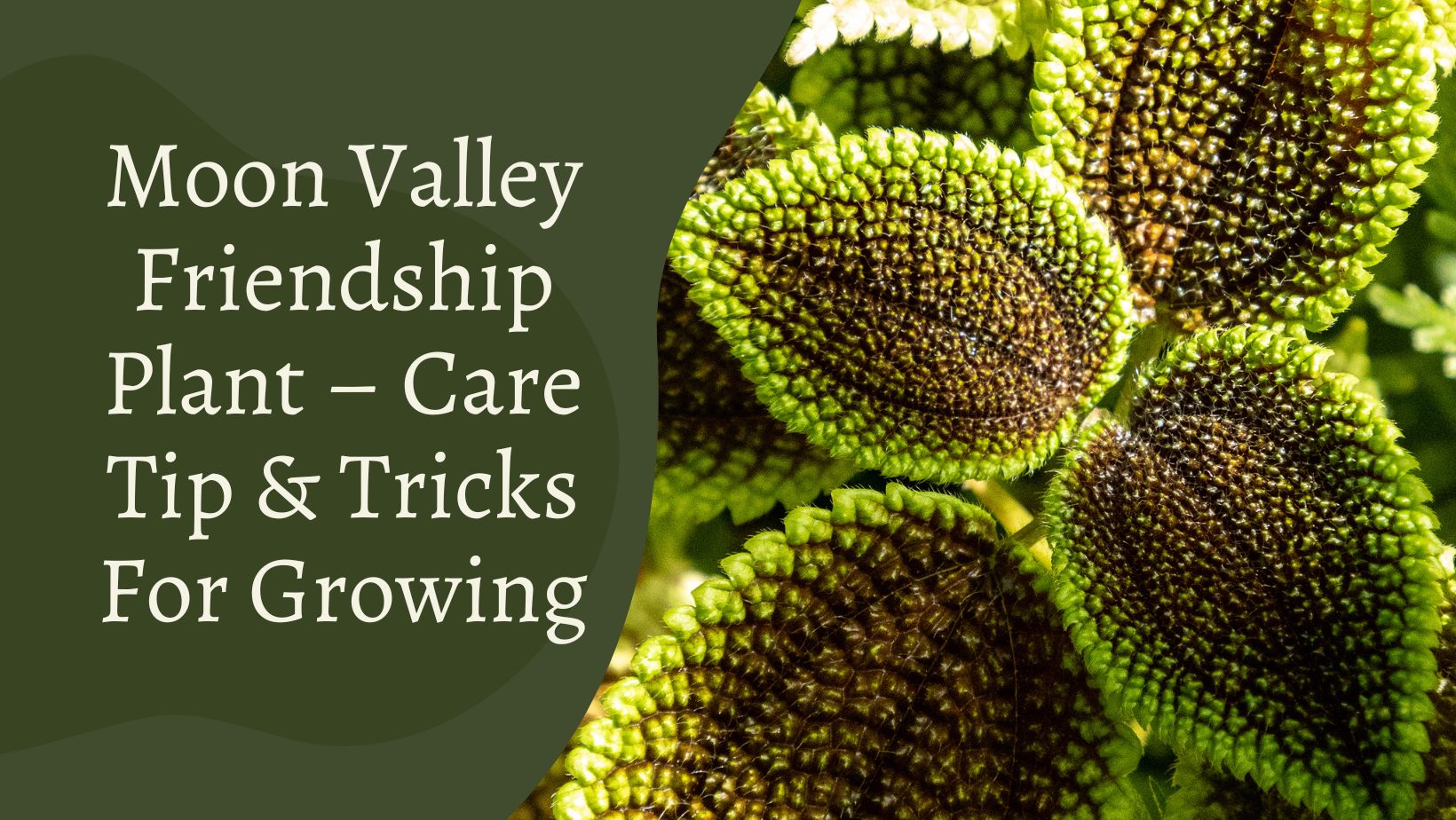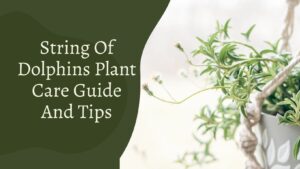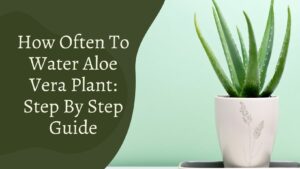
They are amongst the most unique and fascinating patterns of almost any plant I’ve ever seen in homes, such as Moon Valley friendship plant. Leaf texture that looks like a valley makes this plant look different from other trees and shrubs. Pilea involucrata is a popular plant because it has colorful, texture leaves and is easy to live with.
If you’re a beginner, this is a great houseplant. Smaller than average, they only reach a height of about 12 inches. When space is at a premium, and you need to keep an eye on the size of your house plants, a Moon Valley plant could be your best bet. Pilea involucrata care guide covers in this article, so you can keep your plant looking its best.

An Overview of moon valley friendship plant
Pilea seem to be a member of the Urticaceae family; however, its fuzzy hairs aren’t as venomous as some of the Urticaceae’s less friendly members. Pilea involucrata can be grown in either trailing or even the upright, bushy form, making it a versatile plant.
It is a plant that thrives in the shade, and its tiny moon valley friendship plant flowers are easy to miss. Foliage is highly corrugated with serrated edges and dark longitudinal veins. Exotic-looking leaves cover in bronze and burgundy hues, with wide green margins outside. They have a reddish-purple hue on their undersides.
Although native to the southern and central hemispheres, Pilea involucrata is intolerant of frost and wet soil. One foot high and wide is possible, but it’s more likely to stay that way because it’s so fast-growing. This plant has leaves ranging in size from one to three inches.
Because of its ease of Moon Valley friendship plant propagation and ability to share with other gardeners, these low-maintenance species refer to the Friendship Plant. Because of its moonlike appearance, it refers to as the “Moon Valley” Pilea.
The Pilea Involucrata, known by both its Latin and English names, is widely available and provides a striking contrast to the green foliage of most tropical plants. Bushy desktop plants and hanging baskets are excellent options for this plant, which can be used as an accent piece or stand-alone showpiece. It’s also a great terrarium species.
Grow a happy Pilea Involucrata plant, also known as the moon plants, following the instructions below:

Moon Valley Friendship plant light:
While these Pilea can tolerate a wide range of lighting conditions, it prefers bright, indirect light. Be sure to protect the delicate foliage from hot, direct sunlight. In mild or dappled sunlight, they can thrive, but give them time to adapt.
Pilea involucrata market as a low-light option and it is capable of surviving in low light, but there is a cost. A lack of light causes the foliage to become darker and less vibrant and the stems to become leggy. However, the plant can thrive in brighter conditions with adequate protection if place on an east-facing windowsill.
Using sheer curtains is possible, but simply moving the container back a few feet will do the trick. Additionally, it is simple to incorporate one of these lights into an otherwise dimly lit room or terrarium because of how well it grows in artificial light.
Taking moon valley friendship plant care with Water:
Watering this plant, on the other hand, is a breeze. However, there should be no problems if you avoid overwatering or allowing the soil to dry out completely.
The top inch of soil needs to be completely dry before watering. Soak the mixture thoroughly and let it drain entirely. Never rewater a plant again until the top inch of soil has dried out completely. Keep an eye on the medium and water only when necessary, rather than relying on a schedule.
Overwatering is the most common pilea mollis care issue, and your plant will die if the soil is always wet. The plant will not grow if you overwater it during the cooler months. Of course, overwatering can be harmful, but when the soil becomes too dry, the plant sends up a warning flare by wilting slightly.
Moon Valley friendship plant soil
Soil that is rich and exceptionally well-drain is ideal for Pilea involucrata. A bog-free soil makes it much simpler to care for correctly.
Mixing perlite with coco coir or peat moss is an excellent way to improve the amount of aeration in the soil. One better base is African violet potting soil. Adding organic matter, like compost or leaf mold, may improve fertility, but moderation is key.
The Preferable Humidity Level Is High:
Because it’s native to tropical climates, the Pilea involucrata thrives in high humidity, but it’s also a real trooper when the humidity gets too high. The plant can adapt to as low as 50% of the average daily supply.
When heating or air conditioning is used, the aridity of most homes increases, so you may find that certain seasons are arid. Leaf margins browning and poor growth are two signs that a plant is suffering from a lack of moisture in the environment around it.
Humidity increases by arranging tropical plants together in a group. Placement of pebble-filled water trays around or beneath the plant can also help. It is possible to increase the plant’s comfort level with either method. Other forms of increasing humidity for your houseplants discuss in this article.
Pleasant temperatures:
Pilea is easy to care for because it likes a warm, comfortable environment, just like you do. As long as the temperature doesn’t drop significantly in the evening, 65 to 75 degrees Fahrenheit (18 to 24 degrees Celsius) is ideal.

The following are important details:
- At 50 degrees Fahrenheit (10 degrees Celsius), the plant begins to suffer because of the stress caused by the lower temperatures. Keep it out of the cold and out of the way of heaters, please!
- USDA Zones 11 and 12 are suitable for growing the plant outdoors all year round.
- An icy blast will doom it. Leaves may be damaged or destroyed by Moon Valley Friendship plant light frost on specimens.
- Regardless of how cold or warm, the air is, draughts can be harmful to plants.
Fertilization:
This species isn’t a big eater, and it can cause problems overfeeding it. It doesn’t take much for most plants to thrive in organically rich soil. I advise using a half-or quarter-strength balanced mix of fertilizer in the spring and the middle of the summer.
To better fit their feeding schedule, a few growers water down the fertilizer further and apply it monthly during the warm season, but this isn’t necessary. Even during the fall and winter months, do not fertilize your plants. You may learn all you need to know about fertilizing your houseplants from this article if you’re unsure when or how to do it.
Moon valley friendship plant flowers:
![]()
There is no need to get enthusiastic over the Moon Valley Friendship plant bloom of your Pilea involucrata plant. The tiny, unremarkable blossoms, cream or pink in color, are hardly noticeable. In contrast to the surrounding greenery, they have the appearance of frothy foam.
It’s possible that the plant won’t flower indoor moon valley friendship plant because it isn’t a consistent bloomer. If you like, you may remove them.
Repotting:
Moon valley friendship plant care should not include regular repotting. When repotting, the plant’s roots are disturb and ripped in the process.
However, this species has a modest root system and does not care if it is a bit rootbound. Waiting a few years is frequently the best course of action. When repotting, do it in the spring so that the plant has time to recuperate throughout the warm season. It is ready to be planted if the plant has grown sufficiently and roots have protruded from the drainage and dirt. Another indicator is that you need to water more often than usual.
Tips for repotting plants:
- Be careful not to harm the sensitive root hairs by even light shaking or vigorous tamping.
- When repotting, expand the container’s diameter by one inch.
- Be aware that the facility will need some downtime after the operation. Fertilizing or relocating a dormant plant will postpone its return to health.
How to prune Moon Valley friendship plant?
Keep moon valley pilea looking beautiful by pruning it regularly?
The stems snap off since they are so fragile.Because it tends to stretch in low light, Pilea involucrata becomes lanky as it matures. Pinching back the stems, which spread out in all directions, will keep the plant compact. It should also remove dead or decaying leaves and stems to keep the plant looking its best and minimize infection or infestation spots.
Your Pilea may need to prune if they’ve outgrown their terrarium environment, which isn’t unusual. Trim stems may recover with more compact growth if expose to enough light. Pruning may also result in some branching from the clipped area.
Moon Valley friendship plant propagation
Easy division:
The offsets produced by your plant divide after they have developed a strong root system. Try to hydrate the soil at least 24 hours before the main event to prevent transplant shock from occurring due to over-fingered dry root systems. Using your fingers, gently take the plant from its container and lay them near the nodal junction.
When you hear a snap, you know you’ve reached the desired offset. Separate the plant’s leaves and root system from the rest of the plant, keeping in mind the potential for injury. Please make a new batch of houseplant soil and use it to transplant the plant into the appropriate-sized container.
Keep the soil equally wet and places it in a sunny, indirect spot away from direct sunlight. It is important. After four weeks, treat it as a regular specimen by following the care as mentioned earlier instructions!
Moderate Stem-Tip Cuttings:
When the plants reach a height of 8cm or more in the early spring, it’s time to harvest them. The plant’s top 3cm (1.1 inches) should be pinched or pruned to two nodes (leaves) to encourage foliar growth and root development. It should use a wet potting mix to plant the lowest part of the stem. General-purpose compost with extra perlite and sand will work just as well as a houseplant-labeled soil.
If perlite adds to the mix, oxygen will flow freely around the cutting’s base, reducing the likelihood of basal decay. To prevent the stem from drying up due to lack of roots, place the plant in a clear bag. Provide a sunny, indirect site with constant soil moisture to speed up root growth and improve overall health. After four weeks of strong foliar development, remove the bag and continue the care instructions above. ‘
Tips for caring moon valley friendship plant:
Small pots are ideal for growing Pilea involucrata. If their modest root systems lose a vast amount of soil, they may use their energy to develop roots instead of leaves.
Moon valley pilea growth becomes more uneven with each step forward until it touches the light. Maintain the equilibrium of your plant by rotating it frequently. Using a quarter-turn clockwise rotation of their container each time you water is a great idea.
Plants did not repot when they arrived but could adapt to their new environment. To prevent stressing the plant, even if you want to remove it from its nursery container, wait a few weeks before doing so. Seasonal shifts may drastically alter the brightness of a room. During the gloomy winter months, add artificial light to enhance your plant’s natural illumination.
The delicate stems are quickly snapped and need special care. If a piece does break off, consider spreading it. Just bury it in a puddle of water! Growing a bigger and bushier pot requires replanting cuttings back into the soil which initially took them. Keep the mix slightly damp (but not sodden) until the roots establish.
Different kinds of moon valley friendship plant:
Cultivars of Pilea involucrata sell as individual plants in the same container. Other Pilea species seem to be mislabeled based on my study, however. Pilea involucrata has a wide variety in look, although two specimens may resemble distinct cultivars more than they do each other. Plants are known for their individuality, which is part of their allure.
One cultivar, the Pilea Mollis, has a taller and more upright profile that is only marginally recognized. While the pilea Mollis may grow afoot, the genuine species can only reach six or eight inches in height in this depiction.Both types refer to as “Moon Valley,” a popular term. It is not intentionally misleading collectors, but because it accurately represents the fissured surface of their leaves.
Insects and diseases of moon valley friendship plant:
Another perk of pilea Mollis care is that you won’t have to deal with many pests. Even while it isn’t bug-proof, it’s also not a magnet. All regular pests, such as mealybugs, spider mites, and aphids, are possible visitors. It’s critical to catch them early.
At every irrigation, be sure to check your plant for bugs. Explore the crevices and undergrowth. You may need a magnifying lens for some. If you observe unwanted creatures, identify the perpetrators and begin treatment promptly the plant could brush off a bug or two, but if an infestation develops, it can suffer.
Spritz each bug with isopropyl (rubbing) alcohol to kill them. As a precaution, be sure to cover every portion of the plant. Repeat until the infestation eliminate. Also, Pilea involucrata does not have a high risk of illness. After root or stem rot, the most common problem is Leaf Spot.
Any infected leaves should be removed and disposed of properly to prevent your plant from spreading the virus to other parts of the house. Avoid drenching the leaves and increasing the amount of light in your garden.
Essential Tips for Common Issues:
Listed below are the most typical Pilea Involucrata issues. If you take your time, you’ll discover the answer.
Pests
- Most of the plant’s problems are due to aphids and spider mites. For pest control purposes, you must inspect the plant daily.
- They present on the underside of the leaves of the plants they infest most of the time.
- Sucking on the plant’s nectar depletes its supply of nutrients. Dieback occurred when a plant’s nutritional needs didn’t meet.
- Make use of the cotton towel and rub alcohol right once to get rid of any bugs that may be lurking around your plants.
- It may use a damp towel to wipe the leaves down with a bit of alcohol.
- If you don’t have much time and want a fast cure, use insecticidal soap to wash your plants.
Disease:
The only disease that may infect this plant is root rot; otherwise, it is disease-resistant. A plant-like Pilea Involucrata dies from a root infection caused by overwatering.
Follow the recommended watering method for Pilea Involucrata. It should avoid hard water and city tap water.
- Give soft water safe to drink for humans to the child or child’s mother or father.
- Your plant may have root rot.
- You may then replant it in a new pot with fresh soil after cutting the sick roots and returning it to the original pot.
- The ancient Moon Valley friendship plant soil may contain fungal bacteria.
- Once again, these bacteria might infect the root.
Curled leaves of Pilea:
- One or both of the following cause leaf pilea leaves curling:
- Overwatering
- Pests have taken over the area.
Overwatering
- The first indication of root rot in short plants is curled leaves. It might find mushy black roots with a foul odor.
- Replace the dirt in the container and repot the plant. It will fix the problem.
- Repotting it in the same pot is possible, but you must use new soil. Do not water the plant for a few days.
- As soon as you notice healthy signs, begin watering the plant following this technique.
Pests have taken over the area:
- Leaf dryness and moisture loss occur when pests suck sap from a plant’s leaves.
- Curled leaves are the result of this.
- Pest infestation is the real problem if the edges curl.
Involucrata care and yellowing leaves
- It’s not uncommon for even well-cared-for plants to have leaf tips that are a shade of brown or yellowish.
- In addition to low humidity and high light levels, there are three possible causes for underwatering.
- Plant leaves lose their moisture and dry out in low humidity and underwatering situations.
- It causes them to get brown and crisp.
- Leaves that have been on the plant for a long time have turned yellow and brown.
- A few days of misting the leaves of plants with water from a hose or increasing the room humidity should take care of this issue.
- To avoid overexposure to bright light, move your planter to a more shady location. Friendship plants begin to self-heal when they expose to sunlight.
It’s all about moon valley friendship plant care and propagation here. If you have any additional questions, please contact us. We’ll get back to you as quickly as possible.
What Should I Do About My Loose Pilea Involucrata?
Sadly, specimens become leggy, lose their lower leaves, and generally look worse for wear as they age.Cuttings or offsets from an existing plant use to start a new plant. If you plant these seedlings alongside their parent, you’ll have a pot that’s never going to get old.
How to increase the growth of Pilea Involucrata:
Despite its slow rate of growth, Pilea involucrata may be grown if you follow a few simple rules:
- It should maintain the warmest part of the plant’s optimum temperature range.
- Bring the brightness! Tolerates modest morning or late afternoon sun exposure with shaded lighting. Monitor it for blistering and let it get used to the intense light.
- Increase the amount of moisture. Pilea involucrata can live in low humidity, but this will fare better with greater humidity levels. Healthier plants yield greater yields!
- Fertilize, but do so with care. As often as once every month during the warm season, dilute a well-balanced liquid formula and apply generously. Too much fertilizer can contaminate the soil, making it unusable for crops. Reduce or eliminate fertilization during the fall and winter.
Is curled leave will effect on the growth factor?
Various things can cause curled leaves, so it’s critical that you rule out two of the most common causes first. You may have overwatered your soil. If the soil is too wet, unpot the plant and inspect the roots: they should be pale, firm, and sweet-smelling.
There will be brown or black mushy roots that smell bad if your plant is wilting because of root rot, which causes the leaves to curl. There are times when cuttings and starting over are the only options when the disease has taken hold. Infected plants save if they aren’t far gone, but their success rates vary.
To avoid curled leaves, it is essential to inspect your plants for pests as soon as possible. Give the plant a thorough inspection by unrolling the leaves. Any pests found should be dealt with appropriately. A Pilea involucrata’s tendency to Moon valley friendship plant droops due to various factors, the most common of which is overwatering.
You can tell if a plant is overwatered or underwatered by looking at the plant’s moisture level and the pot’s drainage. Moon valley friendship plant drooping due to various factors, including transplant shock, temperature stress, and severe overfertilization.
When do Pilea turn its leaves yellow?
Brown leaves, particularly at the tips and edges, can be caused by various factors, including overexposure to direct sunlight or an extremely low relative humidity. Occasionally, older leaves will turn brown and fall off naturally, but if the problem spreads to newer growth or many leaves, it is almost always the result of poor pilea mollis care.
Pilea Involucrata’s size can vary greatly. This species rarely grows taller than 12 inches (30.5 cm). Most plants don’t grow much more significantly than 6-12 inches (15-30.5cm) when it comes to size.
Conclusion:
Overall, Pilea ‘Moon Valley’ is a lovely, low-maintenance plant that benefits from consistent humidity and an attentive watered to keep its distinctive puckered leaves looking their best. In addition to a soil mix that drains excess moisture, it can enjoy this root-rot-prone houseplant for many years, thanks to the ease of Moon Valley friendship plant propagation.

Hi This is Maria, We are a team of gardening enthusiasts with a passion for gardening. We have tried to bring you tips and advice enabling you to grow and maintain a healthy and beautiful garden. We Hope You Find it Useful.






